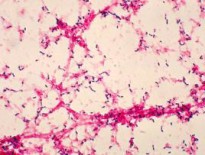
“I’d like to be tested for every kind of cancer.”
All primary care doctors have heard this request. Our answer is an explanation that we can’t. Understanding this explanation is important before we get to the most recent study about mammograms.
We don’t test for all kinds of cancers for an important reason. The outcome of most cancers don’t depend on when they are diagnosed. This may come as a surprise to many, since we’ve all heard the message of the importance of early diagnosis. But that message only applies to a handful of cancers. Diagnosing colon cancer early definitely saves lives, hence the value of screening colonoscopies. Early diagnosis of cervical cancer is also beneficial, hence Pap tests. But many cancers do not fit this pattern. Take leukemia for instance. Some leukemias are curable; others are not. When they’re diagnosed makes little difference. So testing everyone for leukemia wouldn’t save any lives.
This problem is compounded in cancers that are very-slow growing and occur mostly in older people. These cancers, if undetected, may never harm the patient, and the patient could live a normal lifespan and die of an entirely unrelated problem. Detecting these cancers early doesn’t help anyone. That’s called over-diagnosis – diagnosing a disease that would have never caused harm. (That’s a major problem with prostate cancer screening and is why PSA tests are no longer recommended.)
As of 2009 the best evidence we had suggested that mammograms save lives by diagnosing breast cancer early. (I reviewed the evidence in a post back then.) The U.S. Preventive Services Task Force (USPSTF) combined the data of all the randomized studies of mammograms and calculated that on average 1 life is saved from breast cancer for every 377 women in their 60s who undergo mammograms. For women in their 50s the benefit is smaller (i.e. more women must have mammograms to save one life) and for women in their 40s the benefit is smaller still. Because of the very small benefit to women in their 40s the USPSTF recommended against routine mammograms in this age range. (I disagreed in my post.) And they recommended mammograms every two years for women between the ages of 50 and 74.
This month the British Medical Journal published an important study that shines new light on the question. The study began in 1980 and randomized almost 90,000 women in Canada between the ages of 40 and 59 into two groups. One group received annual mammograms for five years, and the other (the control group) did not. If early detection by mammography saved lives, you would expect more deaths from breast cancer in the control group than in the mammogram group. The initial results, which were published long ago, showed the same number of breast cancer deaths in both groups. The objection was that since breast cancer can grow very slowly a benefit of mammography may not be noticed for many years.
The current study publishes the result of following these women for another 22 years. The results are very surprising. About 500 women died of breast cancer in both groups. The survival curves of the two groups were identical, meaning every year the same number of women died of breast cancer in both groups.
To make matters worse, the study showed definite harms of mammography. 106 more cases of breast cancer were diagnosed in the mammogram group than in the control group. But since the same number of women died in both groups those 106 caners were all cases of over-diagnosis – diagnosis of a cancer that would not have harmed the patient. For every 424 women who underwent mammography, one over-diagnosed cancer was detected, resulting in a biopsy and cancer treatment that did not help the patient.
Unfortunately, and predictably, radiologist groups immediately attacked the study. Had they argued “Please keep getting mammograms, otherwise we won’t have as much work to do,” their objections would have at least made sense. One objection was that in 1980 analog mammogram machines were used, and current digital machines are thought to be superior. But all of the studies showing that mammograms were beneficial were done in the 60s and 70s with even older equipment. So to claim that mammograms are proven life-savers and that this study should be ignored because it used old technology is purposely misleading. The current digital technology has never been proven in randomized trials to save lives. The other objection claimed some methodological flaws. These charges have been denied by the authors of the study and investigated by Canada’s National Cancer Institute which found no serious flaws. I’ll spare you the technical details. I’m no expert, but I read the study myself and the biggest methodological flaw I found is that the British Medical Journal spells randomized with an s.
So where does that leave us?
First, we have to remember that this study included women only up to the age of 59. So this study doesn’t tell us anything about the benefit of mammography in women in their 60s or 70s.
But the bigger point is not likely to be refuted – that mammograms in women in their 40s and 50s have very small or non-existent benefits and also definite harms. I might not change my current recommendations until groups like the USPSTF mull over the current findings and make new pronouncements, but I will certainly caution women that the benefit of mammograms is controversial and that an abnormal finding could lead to invasive procedures that may not extend their lives.
Learn more:
Vast Study Casts Doubts on Value of Mammograms (New York Times)
Mammograms May Be Useless, Study Finds (Wall Street Journal video)
Cancer screening expert to radiologists: Stop lying about mammograms (Los Angeles Times)
Mammograms: Are they needed or not? (CNN Health)
Mammography Screening (The Medical Letter blog)
Twenty five year follow-up for breast cancer incidence and mortality of the Canadian National Breast Screening Study: randomised screening trial (British Medical Journal article)
New Mammogram Recommendations Betray Women, Doctors and Science (my post in 2009 reviewing the evidence on mammography)

